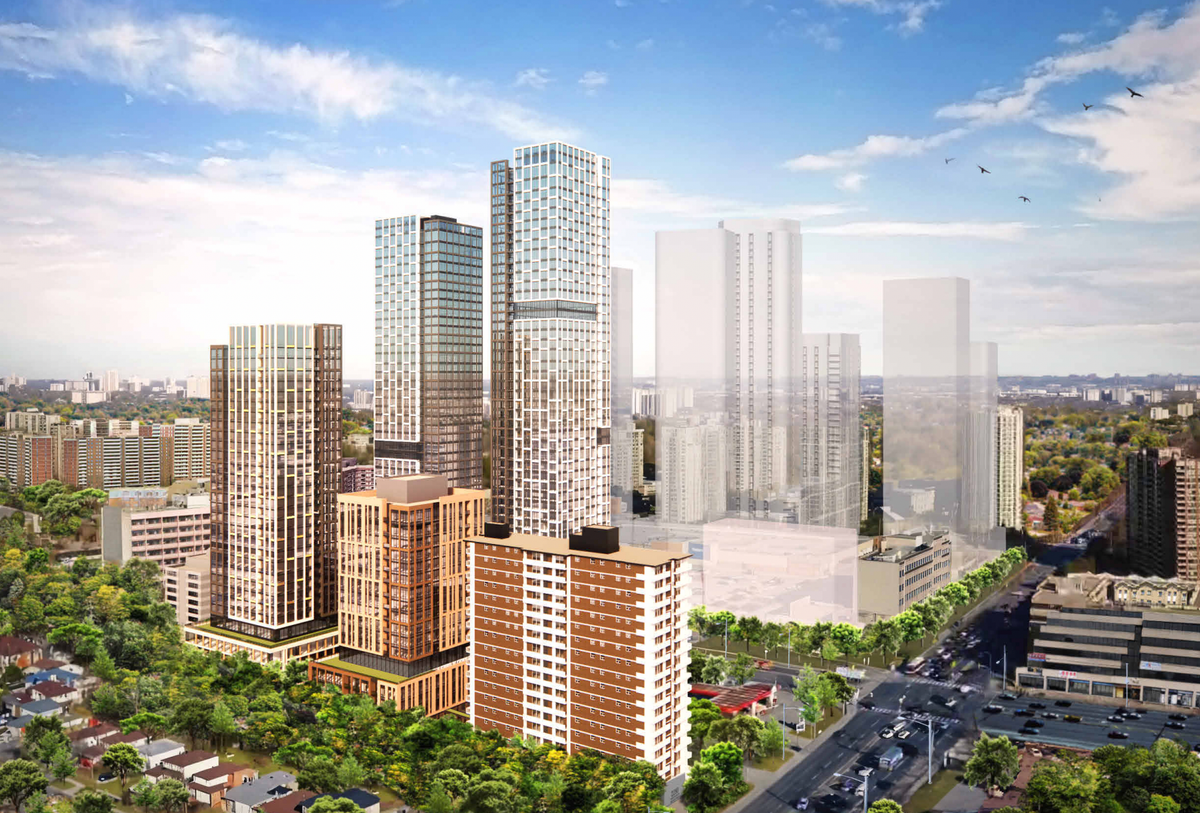When faced with a rapidly swelling population, subsequent developments, and a lack of space, the only option is to build up. Such was the case for Ryerson University when the downtown campus was tasked with meeting the demand of a growing student body within a confined urban space.
The result? Ryerson University hired global architecture and design firm Perkins&Will to create a new, $104 million vertical academic and student hub that soars 28-storeys.
The Daphne Cockwell Health Sciences Complex, a winner of the 2021 Best Tall Building Award by the Council on Tall Buildings and Urban Habitat (CTBUH), is located in Toronto’s dense downtown core, connecting students to the vibrancy of the city while unifying Ryerson's academic and residential functions.
READ: Hariri Pontarini Chosen to Design Contemporary Art Gallery for York University
Located on the eastern edge of Ryerson’s campus the nearly 300,000-square-foot building, which was completed as part of the university's 2008 campus master plan to guide its expansion through new development and renovations, embraces vertical campus typology while integrating academic departments, residences, labs, and administrative offices.
“Daphne Cockwell Health Sciences Complex demonstrates Ryerson University’s position as active city-builders. We found a wonderful fit with Ryerson where our teams were both incredibly motivated to work alongside communities and stakeholder groups to create a state-of-the-art living and learning space," says Andrew Frontini, design director of Perkins&Will's Toronto and Ottawa studios.
"It was critical that we introduce a building that not only connects to, but also enhances the fabric of the surrounding downtown neighbourhood. This type of consolidated yet integrated design is a vibrant and viable solution for urban campuses of the future,” Frontini said.

In a dense city like Toronto, new buildings must reach great heights to accommodate the growing population, and in this case, more students.
Recognizing the need for an integrated approach that marks density, student life, community, and learning, Perkins&Will’s Toronto and Vancouver studios designed a vertical campus typology -- the first of its kind for Ryerson University.
Clad in white aluminum panels and accented with vibrant orange, the striking façade is a bold addition to Toronto’s dynamic skyline. The building adapts Toronto’s prevalent podium-tower model, with the building’s volumes lifted to create an active streetscape and continuous public spaces from the ground level to the roof.

The facade reflects Perkins&Will’s unique approach, with orange threads visually representing the public spaces that are woven throughout the building, putting its activities on display.
The building integrates four academic departments within the first eight storeys: the Schools of Nursing, Midwifery, Nutrition, and Occupational and Public Health, which are supported by a variety of new classrooms, teaching kitchens, and labs to enhance students’ learning experience.

The building also features a state-of-the-art Digital Fabrication lab, visible from the public realm, along with flexible research facilities and university administration offices, while residence dorms fill the top 18-storeys, with space for up to 330 students.
At the pedestrian level, the public atrium holds a café and spaces to socialize and study, while animating Church Street. Large windows fill the space with natural light, creating a seamless indoor-outdoor connection.

When designing the building, Perkins&Will referenced its Precautionary List, an extensive database of hazardous and harmful materials, ensuring the complex was created with materials known for being safe and having a low environmental impact. Designed to achieve LEED Gold Certification, it is expected to use 32% less energy and consume 35% less potable water than traditional construction.
Another unique feature is a metering and monitoring system where the students in residences can view their energy and water consumption online.
“The DCHS Complex is the most ambitious example of sustainable design at Ryerson and it is intended to be a catalyst for continually improving performance," says Max Richter, senior associate of Perkins&Will's Vancouver studio.
"We designed this project to be a great project not just at the opening, but to be an on-going resource for Ryerson’s researchers to study. The lessons learned from this building will make the next generation of buildings better."





















